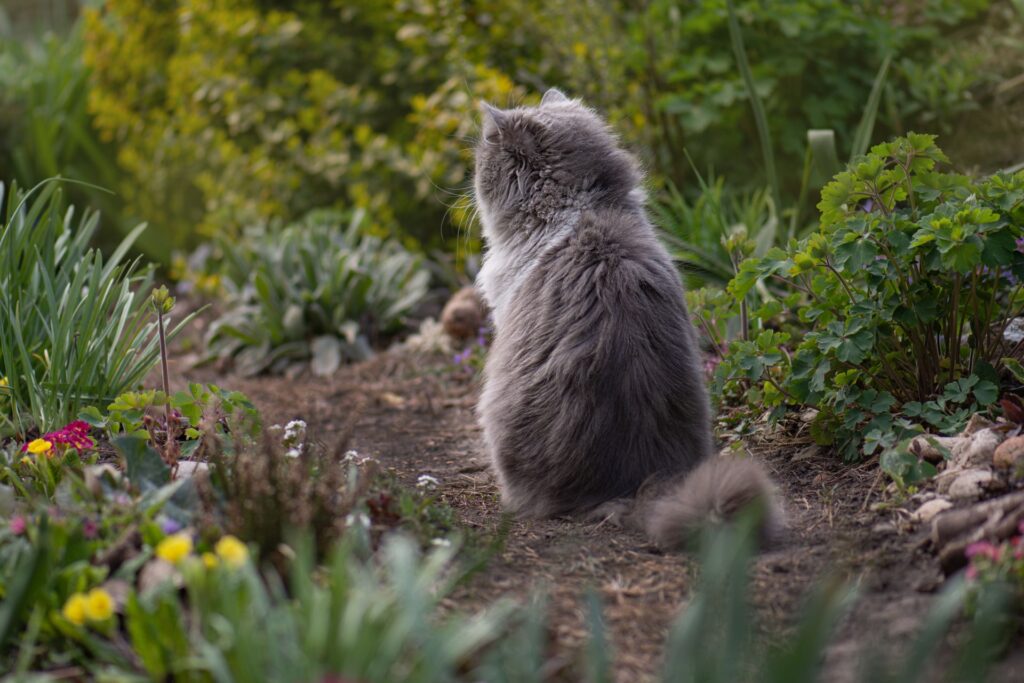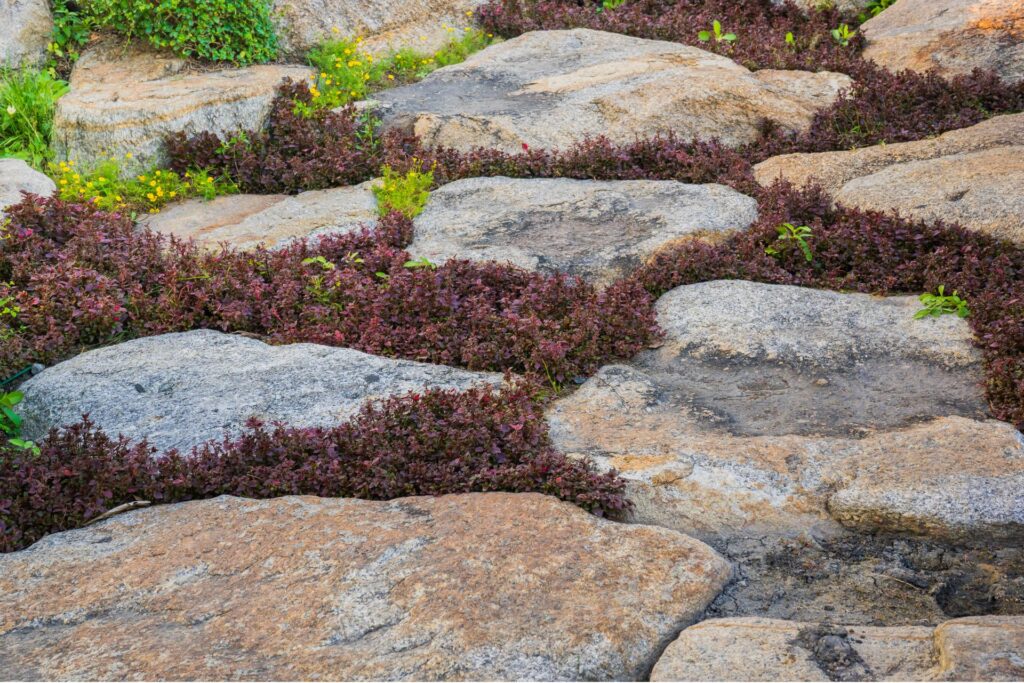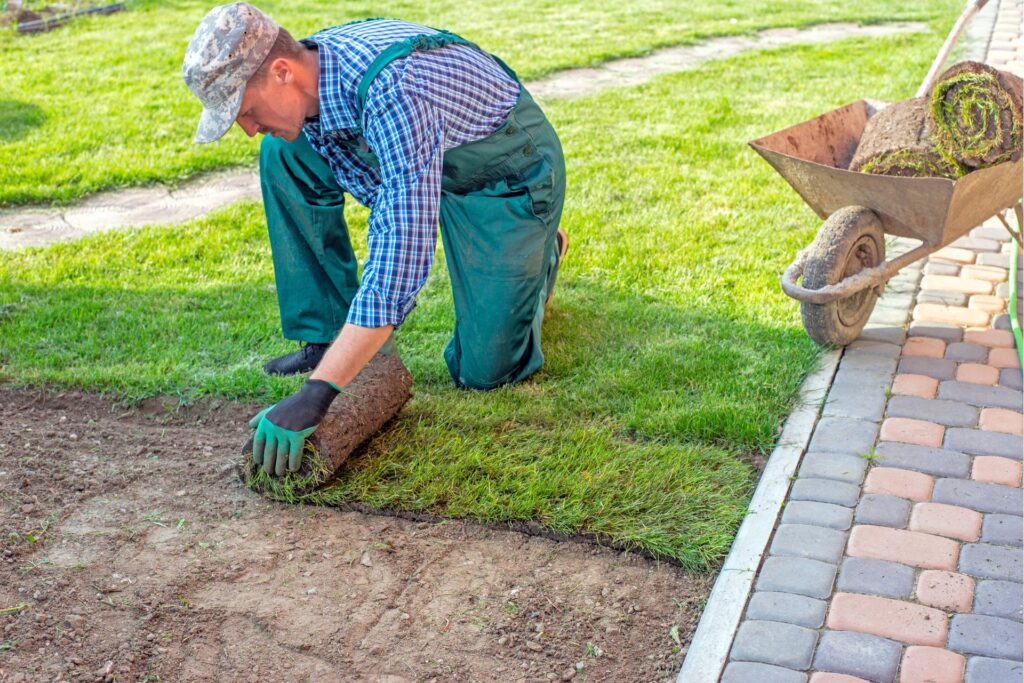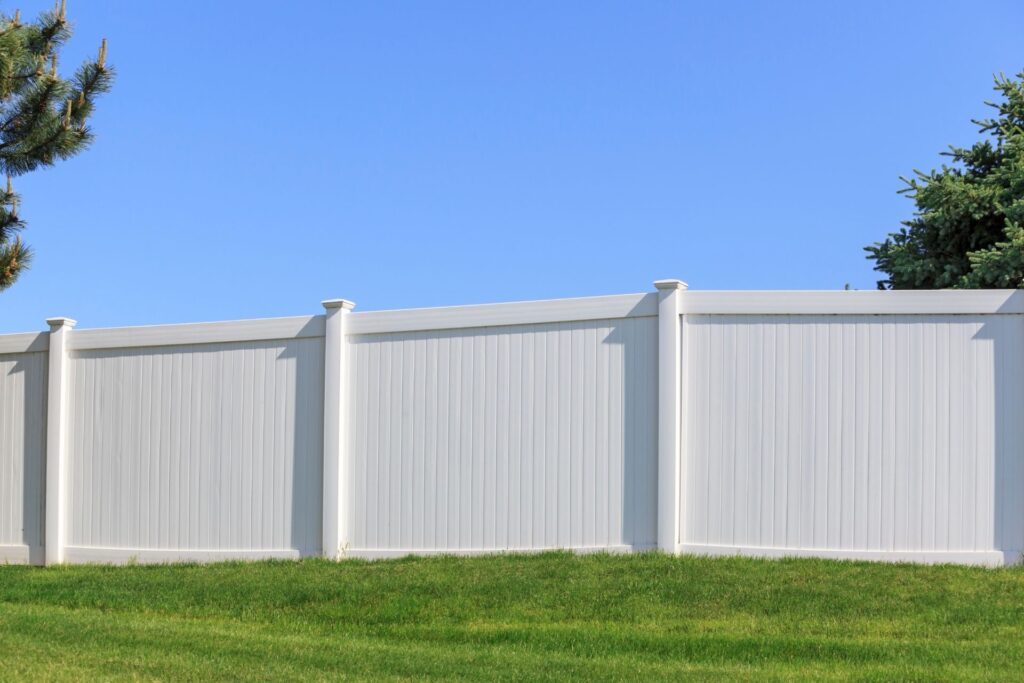Welcome to our comprehensive guide on how to stop cats from pooping in the garden! If you’re tired of finding unwanted surprises in your carefully tended flower beds, you’re not alone. Many gardeners face this common issue, but fortunately, there are plenty of humane and effective solutions to keep felines at bay. In this blog post, we’ll explore why cats are drawn to gardens and share a variety of practical tips and tricks to help you reclaim your outdoor space. From natural repellents to motion-activated sprinklers, we’ll cover everything you need to know to create a cat-free garden while maintaining a pet-friendly approach. Let’s dive in and discover how to keep those pesky paws out of your plants!
To stop cats from pooping in the garden, use humane deterrents such as motion-activated sprinklers, ultrasonic cat repellents, and physical barriers like garden fencing or netting. Natural repellents such as citrus peels, certain herbs (like lavender and rosemary), and essential oils (like eucalyptus and citronella) can also be effective. Making your garden less attractive by mulching with rough materials, covering the soil with chicken wire, and keeping the soil moist can further deter cats. Creating a designated cat-friendly zone with soft soil or sand and positive reinforcement can help train cats to use that area instead.
Understanding Why Cats Poop In Gardens
Natural Instincts
Cats have a set of natural behaviors that guide much of their actions, including where they choose to relieve themselves. One of the primary reasons cats are drawn to gardens is due to their instinctual behavior. In the wild, cats are both predators and prey. To avoid attracting larger predators, they often bury their waste. Gardens, with their soft, loose soil, provide an ideal environment for this behavior. This instinct is deeply ingrained, making gardens a natural choice for cats looking for a safe place to do their business.
Territorial Marking
Another key reason cats choose gardens to poop in is territorial marking. Cats are territorial animals, and one way they mark their territory is through their feces. By defecating in a specific area, they leave behind scent markers that communicate to other cats that this territory is claimed. This behavior can be particularly noticeable in gardens, where the scent can linger and act as a clear boundary marker. Understanding this behavior can help garden owners find more effective ways to manage and deter cats from using their garden as a bathroom.
Soft Soil Attraction
The texture of the soil in gardens plays a significant role in attracting cats. Cats prefer soft, loose soil because it is easier to dig and bury their feces. This preference is not just about ease; it also relates to their natural instincts of hiding their waste from potential predators. Gardens often have the perfect type of soil that cats find irresistible for this purpose. This is why you may find that cats consistently return to the same spots in your garden. To address this, consider adding mulch or other materials that are less appealing to cats, making your garden a less attractive option for them.
By understanding these natural behaviors, you can better manage and prevent cats from using your garden as their personal litter box. Implementing strategies that disrupt these instincts can make your garden a less inviting place for them, preserving the beauty and cleanliness of your outdoor space.

Humane Deterrents
When it comes to keeping cats out of your garden or yard, humane deterrents offer effective solutions without causing harm to the animals. Below are some popular methods and how they work:
Motion-Activated Sprinklers
Motion-activated sprinklers are an ingenious and humane way to deter cats from entering your garden. These devices work by detecting movement within a specified range, typically using infrared sensors. When a cat or other animal crosses the sensor’s path, the sprinkler is activated, releasing a sudden burst of water. This startles the animal and encourages it to leave the area.
The effectiveness of motion-activated sprinklers lies in the fact that cats generally dislike getting wet. The unexpected spray of water creates an unpleasant experience for the cat, teaching it to avoid the area in the future. These sprinklers are not only useful for deterring cats but can also keep other unwanted visitors, such as raccoons and deer, at bay. Additionally, they can be set up in various locations around your property to protect specific areas like flower beds or vegetable patches.
Ultrasonic Cat Repellents
Ultrasonic cat repellents are another humane option for keeping cats away from your property. These devices emit high-frequency sound waves that are inaudible to humans but highly irritating to cats. The sound waves create an uncomfortable environment for the cats, prompting them to leave the area.
One of the significant advantages of ultrasonic repellents is their non-invasive nature. They do not cause any physical harm to the animals. The devices are typically small and can be discreetly placed around your garden or yard. Some models even come with solar panels, making them energy-efficient and environmentally friendly. Ultrasonic cat repellents are particularly useful for protecting larger areas, as the sound waves can cover a wide range.
Garden Fencing and Netting
Physical barriers like garden fencing and netting provide a straightforward yet effective way to keep cats out of specific areas. These barriers can be used to protect flower beds, vegetable gardens, or any other parts of your yard that you want to keep cat-free.
Garden fencing can be made from various materials, including wood, metal, or plastic. The key is to ensure that the fence is tall enough and has no gaps that a cat could squeeze through. A height of at least six feet is generally recommended, as cats are excellent jumpers.
Netting is another practical solution, especially for covering the tops of garden beds or small ponds. The netting should be securely fastened to the ground or surrounding structures to prevent cats from slipping underneath. Both fencing and netting provide a physical barrier that cats cannot easily bypass, offering reliable protection for your garden.
By combining these humane deterrents, you can effectively keep cats out of your garden without causing them harm. Motion-activated sprinklers, ultrasonic cat repellents, and physical barriers like fencing and netting each offer unique benefits and can be used together for maximum effectiveness.

Natural Repellents
Citrus Peels
Cats have a natural aversion to citrus scents, which makes citrus peels an excellent, eco-friendly repellent for your garden. The strong, tangy aroma of citrus fruits such as oranges, lemons, and limes is highly unpleasant to cats. They find the smell overwhelming and will steer clear of any area where it’s present.
To use citrus peels effectively, scatter them around the garden, especially in areas where you want to keep cats away. Place fresh peels near flower beds, vegetable patches, or any spot that you want to protect. Replace the peels regularly to ensure the scent remains strong enough to deter cats. Another method is to make a citrus spray by steeping citrus peels in boiling water, letting it cool, and then spraying the mixture around the garden. This simple, natural solution can help maintain a cat-free garden without resorting to harsh chemicals.
Herbs and Plants
Incorporating certain herbs and plants into your garden can naturally repel cats. Here are some of the most effective options:
- Lavender: Known for its beautiful flowers and soothing fragrance, lavender is disliked by cats. Planting lavender around the perimeter of your garden or in pots can create a natural barrier.
- Rosemary: This aromatic herb is not only great for cooking but also serves as a cat deterrent. Its strong scent is unappealing to cats, and it can be planted throughout the garden.
- Coleus Canina: Often referred to as the “scaredy-cat plant,” Coleus canina emits a scent that is particularly repellent to cats. Plant it in strategic locations to keep cats at bay.
These plants are a dual-purpose solution, adding beauty and functionality to your garden while ensuring it remains cat-free. Plus, they are easy to grow and maintain, making them an excellent choice for any gardener.
Essential Oils
Essential oils offer another natural way to deter cats from your garden. Oils such as eucalyptus, citronella, and peppermint are particularly effective. These oils have strong scents that cats find offensive, and they can be used to create a repellent spray.
To make a cat-repellent spray, dilute a few drops of essential oil in water. A typical ratio is about 10-15 drops of essential oil per cup of water. Pour the mixture into a spray bottle and apply it to areas where you want to discourage cats. Be sure to avoid spraying directly on plants, as some essential oils can harm them. Instead, spray around the base of plants, along garden borders, and on garden structures.
Using essential oils is a safe and natural way to protect your garden from cats. However, it’s important to reapply the spray regularly, especially after rain, to maintain its effectiveness.
These natural repellents not only help keep cats out of your garden but also add pleasant fragrances and aesthetics to your outdoor space. By utilizing citrus peels, strategic planting of herbs, and essential oil sprays, you can create a garden environment that is both beautiful and cat-free.

Making Your Garden Less Attractive
Mulching with Rough Materials
One effective way to discourage cats from frequenting your garden is by using rough materials for mulching. Cats prefer soft, loose soil for digging and doing their business. By covering the soil with pinecones, bark, or rocks, you can create an uninviting environment for them. Pinecones, with their prickly texture, can make walking and digging uncomfortable for cats. Similarly, bark and rocks add a rough surface that cats will likely avoid. These materials not only help keep cats away but also provide additional benefits like moisture retention and weed suppression for your plants.
Covering Soil
Another practical method to deter cats is to cover your soil beds with chicken wire or mesh. This barrier prevents cats from digging into the soil while still allowing your plants to grow. The wire or mesh should be placed just under the surface of the soil. As plants grow, they can push through the holes, but the grid will stop cats from scratching and digging. This simple solution is effective and can be easily removed when necessary, ensuring your garden remains both cat-free and aesthetically pleasing.
Regular Watering
Keeping your soil moist is another great strategy to make your garden less attractive to cats. Cats generally dislike wet environments and will avoid damp soil. Regular watering not only benefits your plants by providing them with the necessary hydration but also creates an undesirable condition for cats. Make sure to water your garden consistently, especially during dry spells. This not only helps in deterring cats but also keeps your garden healthy and thriving.
By incorporating these techniques—mulching with rough materials, covering soil with chicken wire or mesh, and maintaining regular watering—you can create a garden environment that is less appealing to cats. These methods are not only effective but also easy to implement, ensuring your garden remains beautiful and cat-free.

Positive Reinforcement For Pets
Creating a Cat-Friendly Zone
Creating a cat-friendly zone is a fundamental step in ensuring your feline friend feels comfortable and happy. A dedicated space for your cat can make a significant difference in their overall well-being. Here’s how you can create an ideal environment:
- Choose the Right Spot: Select a quiet and cozy corner of your home where your cat can retreat and feel safe. This area should be away from loud noises and high-traffic areas to give your cat a sense of security.
- Provide a Sandbox or Soft Soil: Cats naturally enjoy digging and scratching. By providing a sandbox or a patch of soft soil, you cater to their instinctual behaviors. Ensure the sandbox is clean and filled with safe, cat-friendly materials. You can even use natural, unscented cat litter to replicate the feel of soil.
- Add Comfort and Entertainment: Equip the cat-friendly zone with comfortable bedding, such as a soft blanket or a cat bed. Include some of your cat’s favorite toys to keep them entertained. Scratching posts and cat trees can also enhance the area, giving your cat options for climbing and playing.
- Maintain Cleanliness: Regularly clean the sandbox or soil area to prevent any unpleasant odors and to keep your cat happy. A clean environment is essential for your cat’s health and encourages them to use the designated area consistently.
By creating a dedicated cat-friendly zone, you provide your cat with a personal space where they can relax and engage in natural behaviors, leading to a happier and healthier pet.
Training Your Cat
Training your cat to use the designated area for their activities requires patience and consistency. Here are some effective tips to help you succeed:
- Start with Positive Reinforcement: Cats respond well to positive reinforcement. Whenever your cat uses the designated area, reward them with treats, affection, or playtime. Positive reinforcement helps your cat associate the area with pleasant experiences, making them more likely to use it regularly.
- Use Clear Cues and Commands: Use consistent verbal cues or commands when guiding your cat to the designated area. For example, saying “go to your spot” in a calm and encouraging tone can help your cat understand what you expect from them.
- Be Patient and Consistent: Training takes time, so be patient with your cat. Consistency is key – ensure that everyone in the household uses the same commands and rewards system. Over time, your cat will learn the desired behavior.
- Make the Area Appealing: Keep the designated area attractive by regularly refreshing the materials and ensuring it remains comfortable and clean. If your cat enjoys the space, they are more likely to use it willingly.
- Address Any Issues: If your cat is not using the designated area, try to identify any potential issues. It could be that the area is not clean enough, or perhaps there is something about the environment that your cat doesn’t like. Make necessary adjustments to encourage better usage.
Training your cat to use a specific area can lead to a more harmonious household and a happier pet. With patience, consistency, and positive reinforcement, your cat will learn to love and use their designated space.
By following these guidelines, you can create a nurturing and structured environment for your cat, promoting their well-being and strengthening your bond with them.

Community And Neighborhood Solutions
Communicating with Neighbors
When dealing with issues related to neighborhood cats, effective communication with your neighbors is crucial. Here’s how to approach these conversations constructively:
1. Be Respectful and Friendly: Start with a friendly demeanor. Approach your neighbor politely and express your concerns without sounding accusatory. You might say, “I’ve noticed some cats in my garden lately, and I’m wondering if we can work together to find a solution.”
2. Provide Evidence: If possible, document the issues caused by the cats. Photos or videos can help illustrate your point without seeming confrontational. Showing your neighbor the impact on your property can make the problem more tangible.
3. Suggest Solutions: Instead of just presenting the problem, come prepared with potential solutions. For example, you could suggest that the neighbor keeps their cats indoors during certain times or that you both invest in cat deterrents like motion-activated sprinklers or ultrasonic devices.
4. Offer to Help: Show willingness to work together. You might offer to share the cost of any solutions or help set up deterrents. This collaborative approach can make your neighbor more receptive to your concerns.
5. Follow Up: After the initial conversation, check in with your neighbor to see if the situation has improved. Keeping the lines of communication open can help maintain a good relationship and ensure that the agreed-upon solutions are effective.
Community Efforts
Addressing cat-related issues can also benefit from community-wide strategies, particularly through initiatives like community gardens. Here’s how collective efforts can make a difference:
1. Community Meetings: Organize or participate in community meetings to discuss the problem. This forum can be a place to share experiences, brainstorm solutions, and coordinate efforts.
2. Educational Workshops: Host workshops on responsible pet ownership and humane cat management. These sessions can inform pet owners about the impact of free-roaming cats and encourage them to adopt practices that reduce neighborhood nuisances.
3. Community Gardens: Implementing collective strategies in community gardens can help manage cat populations. For instance, gardens can install physical barriers like fences or plant cat-repellent herbs such as lavender and rosemary. Additionally, garden members can agree on guidelines for keeping cats out, ensuring that everyone’s efforts are aligned.
4. Shared Resources: Pool resources to invest in community-wide deterrents. For example, the community could fund larger deterrent systems like high-frequency noise emitters or communal cat-proof fencing around vulnerable areas.
5. Trap-Neuter-Return (TNR) Programs: Advocate for and participate in TNR programs to manage the local stray and feral cat population. By humanely trapping, neutering, and then returning cats to their territory, these programs can reduce the number of unwanted kittens and stabilize the cat population over time.
6. Volunteer Patrols: Establish volunteer patrols to monitor the effectiveness of the implemented solutions and to address new issues as they arise. Volunteers can help ensure that the community garden and other public spaces remain cat-free zones.
By fostering open communication with your neighbors and leveraging the power of community efforts, you can create a harmonious living environment that minimizes the impact of free-roaming cats. These strategies not only address the immediate concerns but also build a stronger, more cooperative neighborhood.

Addressing Persistent Problems
Dealing with ongoing issues in your home or with your pets can be frustrating. However, there are reliable solutions available that can help you address these persistent problems effectively. Here are two important steps to consider:
Consulting a Vet
If your pet is experiencing health issues that don’t seem to resolve, it’s crucial to seek professional veterinary advice. Persistent symptoms such as prolonged itching, unusual behavior, or consistent digestive problems may indicate underlying health issues that require expert diagnosis and treatment. A vet can conduct comprehensive examinations, run necessary tests, and provide tailored treatment plans to ensure your pet’s health and well-being.
Consulting a vet is not just about treating current symptoms but also about preventing future health problems. Regular check-ups can help catch potential issues early, making treatment easier and more effective. Vets can also offer valuable advice on nutrition, exercise, and general care, which are essential for your pet’s overall health. By addressing persistent problems with professional guidance, you can ensure your pet leads a happy and healthy life.
Professional Pest Control
When it comes to household pests, persistent infestations can be particularly challenging to handle on your own. If you’ve tried various DIY methods without success, it might be time to consider professional pest control services. Experts in pest control have the knowledge, experience, and tools to tackle even the most stubborn infestations effectively.
Professional pest control services offer several advantages. They can accurately identify the type of pest and the extent of the infestation, which is critical for selecting the most appropriate treatment method. Moreover, they use safe and effective products that are not readily available to the general public. These products are designed to target pests specifically while minimizing risks to your family and pets.
In addition to eliminating the current infestation, professional pest control services can provide preventative measures to ensure that pests do not return. This might include sealing entry points, advising on maintenance practices, and scheduling regular inspections. By investing in professional pest control, you can maintain a pest-free environment in your home, ensuring peace of mind and a healthier living space.
In summary, addressing persistent problems requires a proactive approach. Whether it’s consulting a vet for your pet’s health issues or hiring professional pest control services to handle an infestation, seeking expert help can make a significant difference. These professionals offer specialized knowledge and solutions that can effectively resolve ongoing problems, providing you with lasting results and peace of mind.

FAQs: About How To Stop Cats From Pooping In The Garden
Conclusion
In conclusion, we’ve covered a range of valuable tips and solutions to tackle the challenges at hand. From practical advice on techniques to detailed strategies for effective implementation, this blog post has provided a comprehensive guide. Remember, trying multiple methods and remaining patient is key to success. Your journey might require some trial and error, but each step brings you closer to your goal. We encourage you to share your own tips and experiences or ask any questions you may have in the comments section below. Your insights could be invaluable to others facing similar challenges.
About the Author:
Mike Veail is a recognized digital marketing expert with over 6 years of experience in helping tradespeople and small businesses thrive online. A former quantity surveyor, Mike combines deep industry knowledge with hands-on expertise in SEO and Google Ads. His marketing strategies are tailored to the specific needs of the trades sector, helping businesses increase visibility and generate more leads through proven, ethical methods.
Mike has successfully partnered with numerous companies, establishing a track record of delivering measurable results. His work has been featured across various platforms that showcase his expertise in lead generation and online marketing for the trades sector.
Learn more about Mike's experience and services at https://theleadguy.online or follow him on social media:








